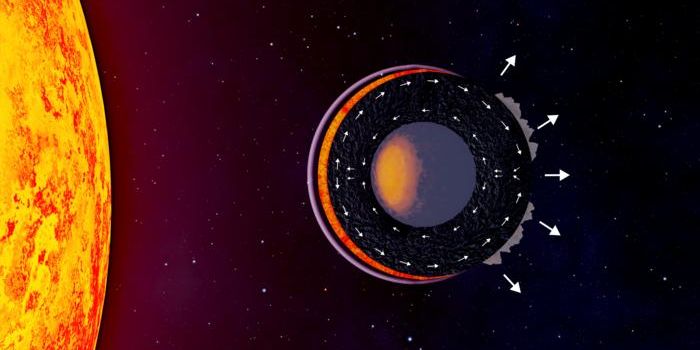NASA is Working on a New Way to De-Orbit Small Satellites
When NASA attempts to de-orbit small 'nano-satellites' so they can return to Earth, they typically rely on special rocket systems onboard the spacecraft, which provide thrust that can fight the gravitational pull of the Earth.
This rocket system guides the satellite to land safely back on Earth such that it and its contents aren’t destroyed in the process of being de-orbited, but the high cost of fuel and developing complex rocket systems to land them are just some of the problems NASA aims to solve soon to make retreiving the results of space-based science experiments more doable.
Image Credit: NASA
To fix this problem, the space agency is currently working on a system known as the Exo-Brake, which will utilize special kinds of X-shaped parachutes, flexible cord, and mechanical struts that deploy from a nano-satellite’s rear end to slow it as it descends by creating additional drag.
“The Exo-Brake’s current design uses a hybrid system of mechanical struts and flexible cord with a control system that ‘warps’ the Exo-Brake – much like how the Wright brothers used warping to control the flight behavior of their first wing design,” said Marcus Murbach, principal investigator and inventor of the Exobrake device.
Engineers from NASA’s Ames Research Center in California’s Silicon Valley are said to be working on the project right now, fine-tuning the Exo-Brake and testing its effectiveness. They’re also working with simulations in combination with the Exo-Brake’s ‘warping’ effect to learn how to control its landing, which is an important skill anyone de-orbiting a nano-satellite would need to learn to accurately control where it would land.
Image Credit: NASA Ames/Dominic Hart
An Exo-Brake module was recently sent into space aboard a Japanese rocket in December and is currently on the International Space Station. There, it will wait to be deployed sometime this year, so researchers can test it out with the real deal.
Exo-Brake has been in development for five years, and has so far been tested on less-important things, such as sub-orbital rockets and balloons. Since they’re pushing forward with larger things, one must assume the preliminary tests were quite successful to start with.
Now that a working prototype is in space and ready to be used, NASA will likely test one by trying to send science payloads back to Earth from the International Space Station in the future. NASA often collects science experiments that were once aboard the International Space Station to learn more about the experiment that was performed in space, and the Exo-Brake could make doing this much cheaper and allow NASA to do it more often.
It should be interesting to see where the future of de-orbiting nano-satellites resides and whether or not the Exo-Brake will revolutionize the cost efficiency of doing so. Perhaps some day the technology will evolve enough to be used with full-sized satellites.
Source: NASA










